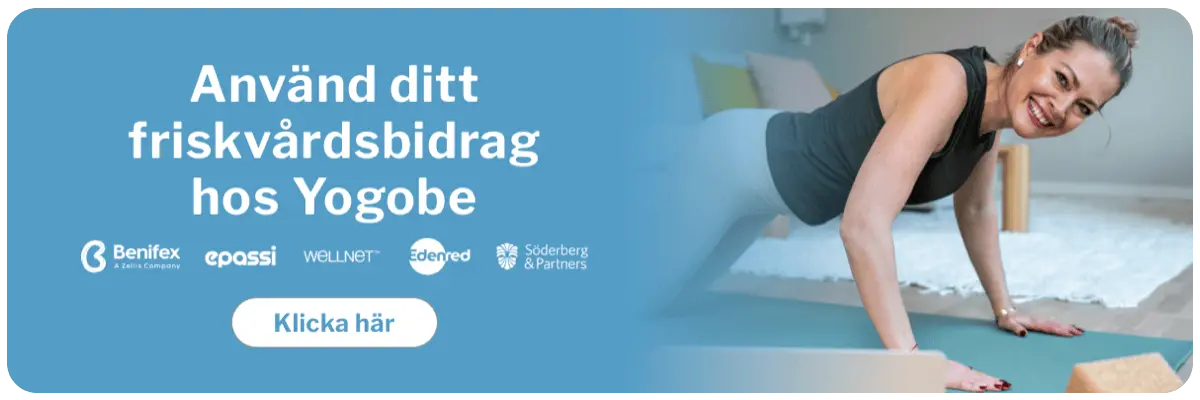
What I talk about when I talk about yoga
Yoga teacher Frida Starvid (fd Boström) asks her self if there really are some yoga forms that are better than others or more true? And does it really matter as long as you find the yoga form that suits you and your needs?
Exercise as such has never interested me
I´ve known for a while that this piece was going to center around a book by Haruki Murakami called What I Talk About When I Talk About Running. This month´s blog theme is “pulse, heat and exercise”, and I had picked this book in lieu of having to write anything personal. It´s a good read, which you might expect from a writer of his caliber. Murakami writes about running, basically, in a very straightforward fashion, but uses the subject as a cover-up for what is really an autobiography.
It wasn´t obvious, however, what my take on the subject would be, even through the lens of Murakami. Not until I found myself in a locker room with one of my students after a challenging Rocket class, and the opening appeared as if by magic. While changing, we were leisurely talking about different styles of yoga, and my student made the observation that it seemed like yoga was gaining popularity because people see it as a form of physical exercise. “I don´t know much about that”, I said, pulling on my jeans. She looked at me, confounded.
A long conversation followed, in which I talked about the background of Rocket yoga - that while it is up-tempo and physically challenging, it is derived from the disciplined Ashtanga tradition, firmly grounded in yoga philosophy and that it has mantras, bandhas and breath work at its core. I talked about the fact that exercise as such has never interested me. That only insofar as my mind can be absorbed into something more meaningful while moving, my body is willing to work. The girl nodded thoughtfully. “I guess I´ve never looked at it that way,” she concluded, just before we said goodbye.
Is there only one true yoga form?
While I sat on the bus, I thought about things I´ve heard people sometimes claim over the last couple of years - that physically demanding yoga in some way should be less profound and require less awareness than slower forms of practice - and therefore is shallower and more about performance. I´ve heard someone say, for example, that sitting in Lotus and meditating is harder than doing Pincha Mayurasana. And that is perhaps true, depending on who you are. But perhaps not. Or maybe on some days, and not others. The question is, does it matter? Isn´t the comparison futile? To me, doing advanced asanas is not about snapping fancy pictures, but about a natural will to progress. Being spurred on by gradual development, having positive mental and physical feedback from trying new things and achieving postures one never thought possible, is a good thing in my book. That does not, however, make me opposed to any other type of yoga, which is the main important point I want to drive home. Everyone should not have to prefer the same things.
Absorbed in the physical concentration
I think one´s preference when it comes to style has a lot to do with one´s personality. In his book, Murakami reflects that to a certain extent we can change our physical and mental setup, but we all have slightly different constitutions, and in the end, you have to make the best of what you have. Murakami is a proven long-distance runner; I would not choose that term to describe myself. Both in yoga and in life I am good at dynamic and creative aspects, good at initiating stuff, happy when I reach fast results, but with a sad tendency to burn out because of it.
I am at the core a fast, driven, restless person without much patience, so when I started doing yoga, there was no chance I would have been able to continue with something like Hatha or Yin. I tried, so I know. Then one evening, without the slightest idea of what to expect, I tried a Rocket yoga class. And when I came out of the studio 90 minutes later, it was the first time in my life I experienced my mind quiet. I had been so absorbed in the physical concentration, that I´d had no time to notice that something had miraculously shifted. A mediation class would never have done the same job. Not for me, not ten years ago.
The physically challenging yoga was my entrance to mental stillness
What I can say, is that dynamic yoga has helped me work with some of the negative aspects of my constitution. Physical challenges make my mind one-pointed, as I need to concentrate my whole being, be one with my breath and my body and feel what´s going on in each single body part. While naturally I want to succeed the first time I try something new, practicing this way has taught me patience to a degree I never thought possible. It has been my entrance to mental stillness, to concentration, and in its wake, to meditation. Also, when I practice I need to stay focused solely on myself. I sometimes go through large parts of a class with my eyes closed. And whether that´s the case or not, after class I never have an idea of what the person next to me has been up to. I am so focused that there is no room for comparison. To me that´s a big part of what yoga is about. What style one chooses in order to achieve this is superfluous to the equation.
Murakami´s autobiography is one long contemplation on running, and on life. He talks about ageing, the way the body and the mind changes, and that his preferences change with it. And he manages to squeeze in lines as beautiful as “The most important thing we ever learn at school is the fact that the most important things can´t be learned at school.” In fact, he writes, most of what he knows about writing fiction he learned by running every day. I guess I could say something similar about life and yoga.
Videos you might like
video id: d7z6
video id: u5ge
video id: c48k
video id: 2h5z
To be able to see the full video you need to be logged in as a paying member. New to Yogobe? Register to start your 7 days free trial here!
Read more
- On the Pursuit of Slackness, by Frida Starvid (fd Boström)
- Living Healthier with Ayurveda, by July Huang
About Frida
Frida Starvid (fd Boström) is a Vinyasa, Ashtanga, Rocket and Yin teacher (200+140 hr), educated in India, Sweden and Spain. She started off as an architect but after a burnout she decided to shift careers. Her first trip to an ashram in India in 2015 led to many more, and evoked her already existing curiosity about philosophy and meditation, as well as fun and physically challenging yoga. Frida gives regular classes and assists at yoga teacher educations in Sweden and abroad. Read more about Frida at her website or follow her at Instagram: @fridastarvid

Yogobe
